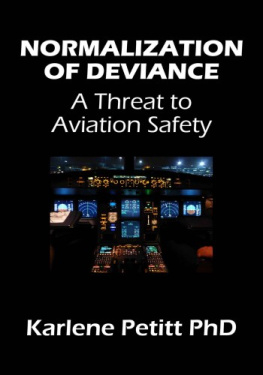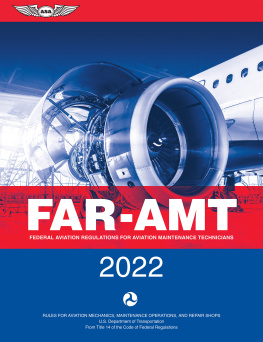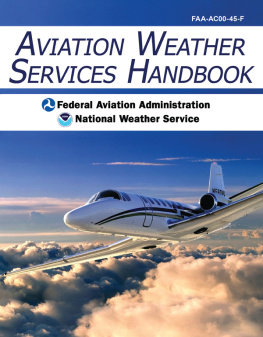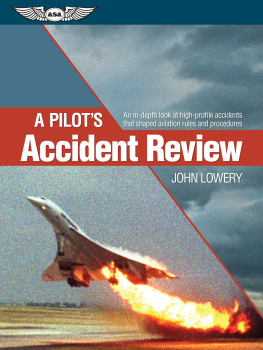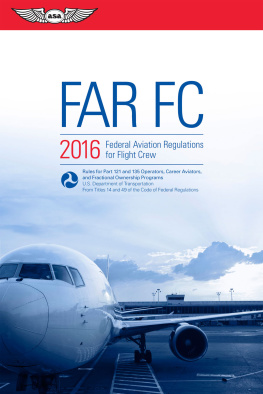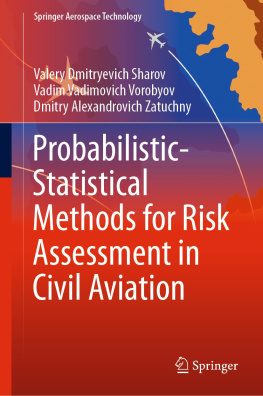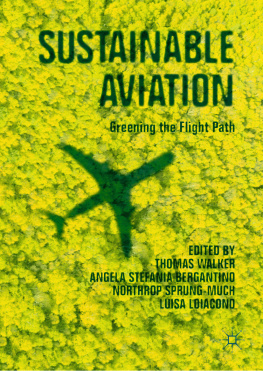HUMAN FACTORS MODELS FOR AVIATION ACCIDENT ANALYSIS AND PREVENTION
Reviews of Human Factors Models for Aviation Accident Analysis and Prevention
Although the aviation industry has made tremendous progress during the last three decades by considerably reducing the number of fatal accidents, risk investigation models are still linear and new approaches, such as network-based models, must be developed. The information network approach provided in this book is crucial to better understand, analyze, design and evaluate current complexity of aviation human-system integration.
Guy A. Boy, Florida Institute of Technology, USA; NASA Kennedy Space Center, USA; and Fellow of the Air and Space Academy
The authors undertake a comprehensive and systematic analysis of a range of approaches to error causation, and have extended this analysis into systemic accident and incident causation. They both advocate and demonstrate important new methodologies that can be used to draw meaning from complex occurrences, thereby enabling the identification and implementation of meaningful interventions. Finally, they tackle the issue of the validity of post-hoc analyses of accidents and incidents and how models of causation might be examined empirically. It is a text that casts an eye both to the past and to the future of modelling and the prediction of complex events.
Mark Wiggins, Macquarie University, Australia
Human Factors Models for Aviation Accident Analysis and Prevention provides a new and very promising approach to understanding the complex, systemic, and non-linear causes of accidents in both commercial and general aviation. It represents a very important contribution to the field of aviation accident investigation, and one that should be read by both researchers and practitioners in that field.
Steven J. Landry, Purdue University, USA
Human Factors Models for Aviation Accident Analysis and Prevention
THOMAS G.C. GRIFFIN
DHL Aviation, Kingdom of Bahrain
MARK S. YOUNG
Brunel University, London, UK
NEVILLE A. STANTON
University of Southampton, UK
ASHGATE
Thomas G.C. Griffin, Mark S. Young and Neville A. Stanton 2015
All rights reserved. No part of this publication may be reproduced, stored in a retrieval system or transmitted in any form or by any means, electronic, mechanical, photocopying, recording or otherwise without the prior permission of the publisher.
Thomas G.C. Griffin, Mark S. Young and Neville A. Stanton have asserted their rights under the Copyright, Designs and Patents Act, 1988, to be identified as the authors of this work.
Published by
Ashgate Publishing Limited
Wey Court East
Union Road
Farnham
Surrey, GU9 7PT
England
Ashgate Publishing Company
110 Cherry Street
Suite 3-1
Burlington, VT 05401-3818
USA
www.ashgate.com
British Library Cataloguing in Publication Data
A catalogue record for this book is available from the British Library.
The Library of Congress has cataloged the printed edition as follows:
Griffin, Thomas G. C.
Human factors models for aviation accident analysis and prevention / by Thomas G.C. Griffin, Mark S. Young, and Neville A. Stanton.
pages cm
Includes bibliographical references and index.
ISBN 978-1-4724-3275-9 (hardback : alk. paper) ISBN 978-1-4724-3276-6 (ebook) ISBN 978-1-4724-3277-3 (epub)
1. AeronauticsHuman factors. 2. Aircraft accidentsInvestigation. 3. AeronauticsSafety measures. 4. Aircraft accidentsPrevention. I. Young, Mark S. II. Stanton, Neville A. (Neville Anthony), 1960 III. Title.
TL553.6.G75 2015
363.12465dc23
2014033812
ISBN 9781472432759 (hbk)
ISBN 9781472432766 (ebk-PDF)
ISBN 9781472432773 (ebk-ePUB)
Contents
List of Figures
List of Tables
About the Authors
Dr Thomas Griffin is a pilot with DHL Aviation based in the Kingdom of Bahrain. Previously he was a Captain flying for Gama Aviation, a global business aviation service provider. He has a BSc in Biological Sciences with specialisation in behaviour and psychology from Kings College London and a PhD in Human Factors from Brunel University in the UK. In addition to his flying role Dr Griffin has worked for some time as a Flight Safety Officer and with safety management systems within the business and airline aviation industries. His research interests centre on the complexity of real-world, non-linear accident causation in aviation and the interaction between humans and the information available in their environment.
Dr Mark Young is a Visiting Professor in Human Factors and Ergonomics within the School of Engineering and Design, Brunel University, London, UK. His research interests include cognitive ergonomics aspects of attention, human performance and human error. Particular emphasis is placed on transportation human factors and transport safety, particularly with advanced vehicle technologies and automation. His research has focused mainly on driver attention and mental workload with vehicle automation, but he also has experience in rail safety and human factors aspects of aviation. Dr Young has a BSc in Psychology and a PhD in Cognitive Ergonomics, both from the University of Southampton, and a PGCert in Learning and Teaching in Higher Education from Brunel University. He worked at the Rail Safety and Standards Board from 2001 to 2003, and was a Visiting Fellow in the Department of Aviation, University of New South Wales, in 2004. He was a full-time member of Brunel Design from 2004 to 2012, and is also a Visiting Fellow at Curtin University in Perth, Australia.
Professor Neville Stanton, PhD, is both a Chartered Psychologist and a Chartered Engineer and holds the Chair in Human Factors Engineering in the Faculty of Engineering and the Environment at the University of Southampton. He has degrees in Psychology, Applied Psychology and Human Factors and has worked at the universities of Aston, Brunel, Cornell and MIT. His research interests include modelling, predicting and analysing human performance in transport systems as well as designing the interfaces between humans and technology. Professor Stanton has worked on cockpit design in automobiles and aircraft over the past 25 years, working on a variety of automation projects. He has published 25 books and over 200 journal papers on Ergonomics and Human Factors, and is currently an editor of the peer-reviewed journal Ergonomics. In 1998 he was awarded the Institution of Electrical Engineers Divisional Premium Award for his paper, Engineering Psychology and System Safety. The Institution of Ergonomics and Human Factors awarded him The Otto Edholm Medal in 2001, The Presidents Medal in 2008 and The Sir Frederic Bartlett Medal in 2012 for his contribution to basic and applied ergonomics research. The Royal Aeronautical Society awarded him the Hodgson Prize and Bronze Medal in 2006 for research on design-induced flight-deck error.
List of Abbreviations
|
|---|
AA | American Airlines |
AAIB | Air Accidents Investigation Branch |
AIRS | Aircraft Incident Reporting System |
ALARP | As Low As Reasonably Practicable |
ANOVA | Analysis of Variance |
ASR | Air Safety Report |
ASRS | Air Safety Reporting System |
Next page

